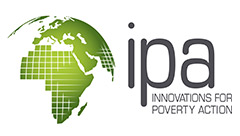When IPA’s rigorous evidence is used to improve the lives of the poor, we call that impact.
We cannot, however, measure our own impact with a randomized evaluation, as much as we would like to be able to. Ironic, we know. But what we can do is track changes in programs, policies, and debates that we are confident we have contributed to. We say contribute because we never do this alone – our partners, researchers, and many others are also crucial to any impact we achieve.
Some of our evaluation results, such as those on chlorine dispensers, bednets, or deworming, have been used by various governments and NGOs to develop programs that are reaching millions of people. Other impacts are smaller, such as the scale-up of a government campaign in Zambia that attracts better health workers, or the use of fingerprinting to increase repayment rates in Malawi credit bureaus. Our work has also been used to influence international development debates on crucial investments, as in the cases of microcredit and cash transfers.
On these pages you will see many cases that demonstrate our impact, but you will not see them all—many are unknown. When our evidence goes out into the world, it can be used by anyone (and we hope it is). Organizations rarely, if ever, cite an academic paper or policy note when they start a new program. We will not attempt to tell you about impacts we haven’t been able to track.
So how do we achieve impact? We design and evaluate solutions and mobilize and support decision-makers to use the evidence, leading to better programs and policies for the poor. But of course as the case studies illustrate, it is never that linear. READ MORE »
And more importantly, how do we get to impact at nationwide, regional, or global scale? It requires knowing that a solution is effective in multiple contexts and knowing how to cost-effectively operate the solution at scale. READ MORE »





